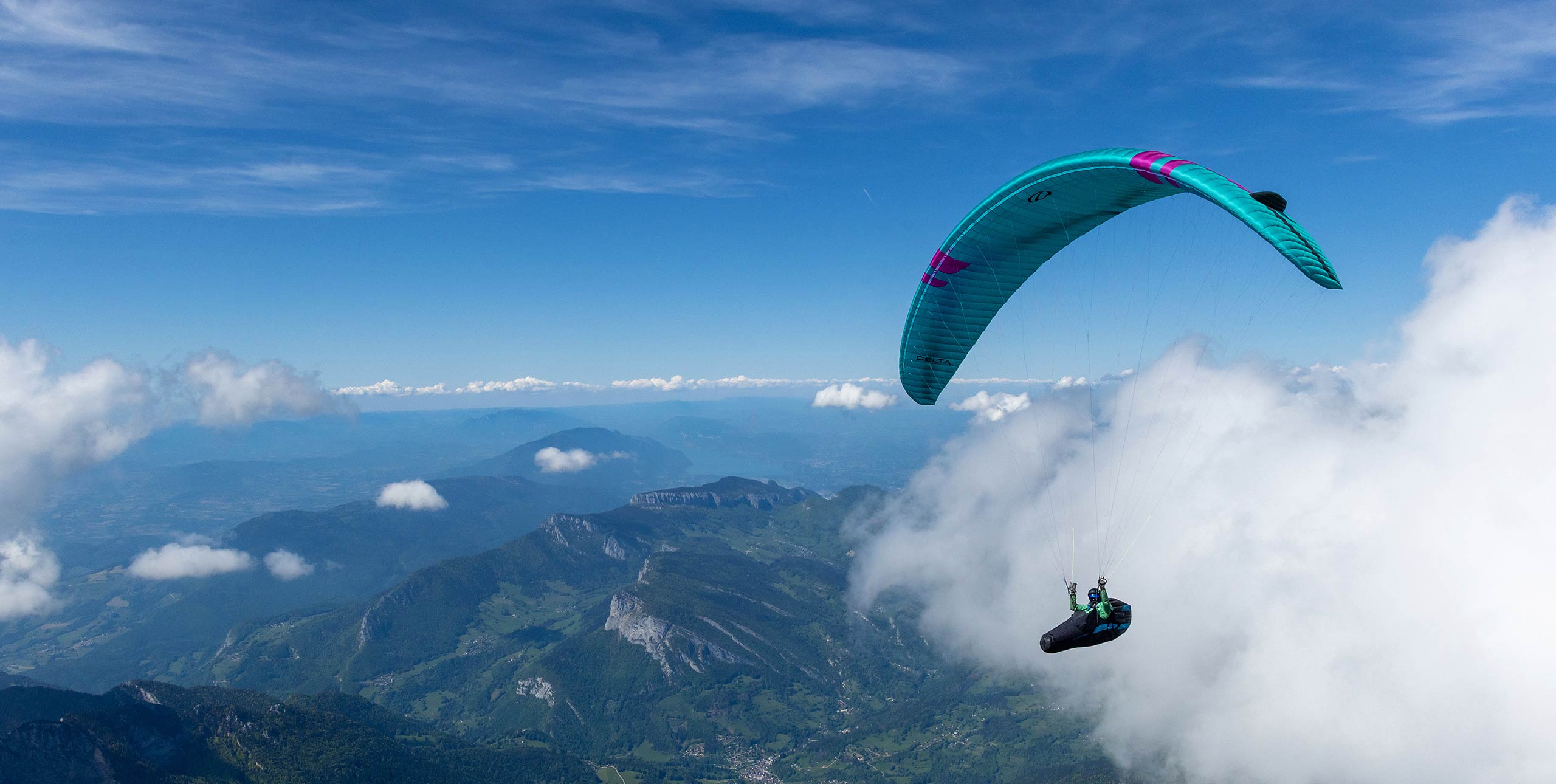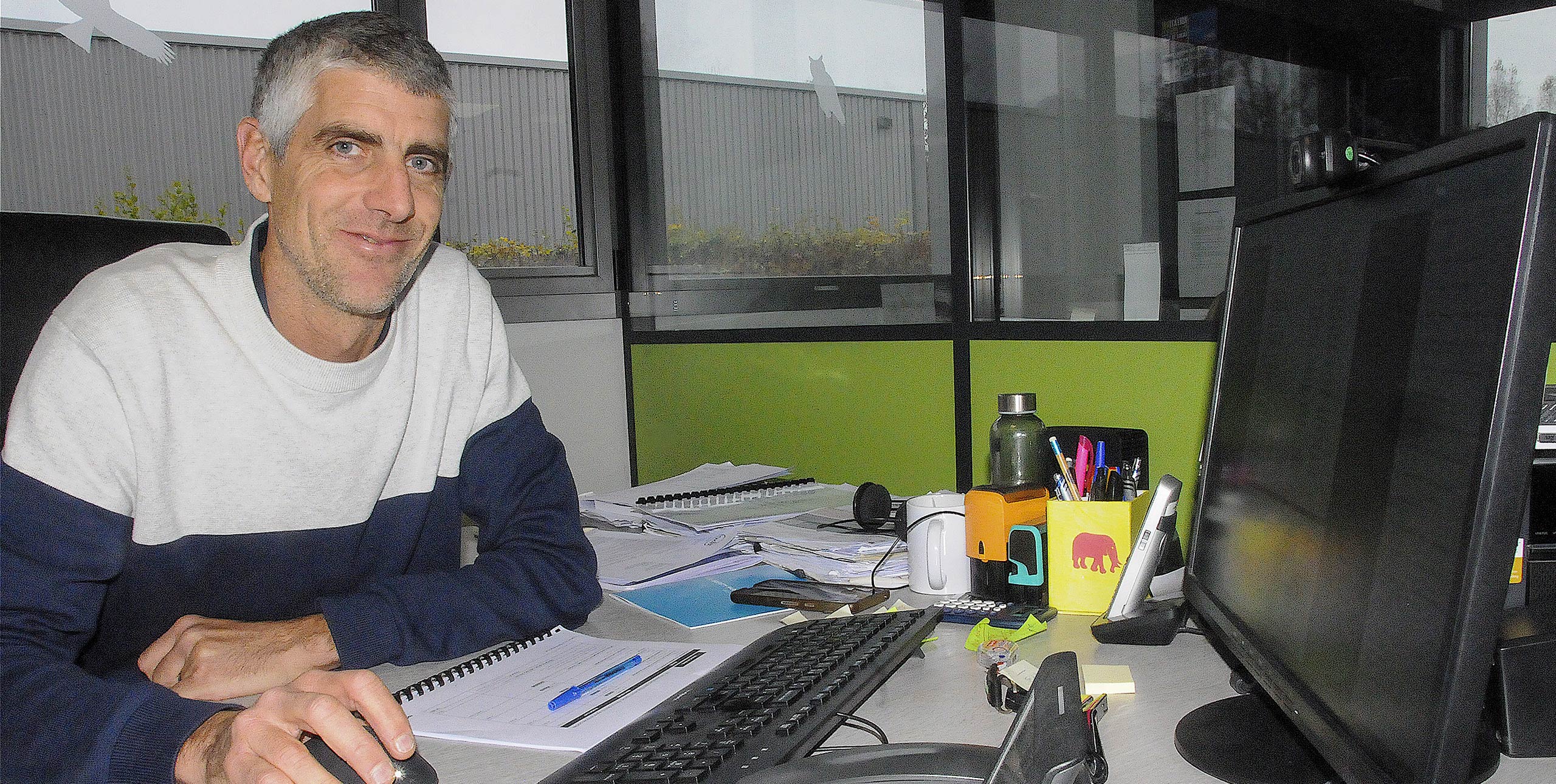
The “lightest wing in the world” has had an upgrade. Marcus King takes it for a hike-and-fly.
The original Run&Fly was released in 2020, when it was the first production wing ever made that weighed under a kilo. Less than a kilo! As its name suggests, the low weight and tiny packing size was perfect for pilots who wanted to run with their wing, or mountain adventurers who wanted the lightest possible descent tool.
Although it’s very niche, there are now specialist running-vest rucksacks on the market for those who genuinely want to go trail running with their single-skin wing (the K17 from Kortel we reviewed in XC236 is one), and we are sure to see more pilots crossing over between the sports. But the one group that has wholeheartedly welcomed the wing are high-altitude alpinists, for whom the low weight and compact size mean it is easy to include in their climbing kit. Climbers have flown from some of the world’s highest mountains using the Run&Fly, including from 8,000m on K2 and the summit of Aconcagua (6,961m), proving it is a capable tool for mountain descents. For the rest of us, the low weight and small packing size means we can take the wing on walks on-spec without really noticing it.
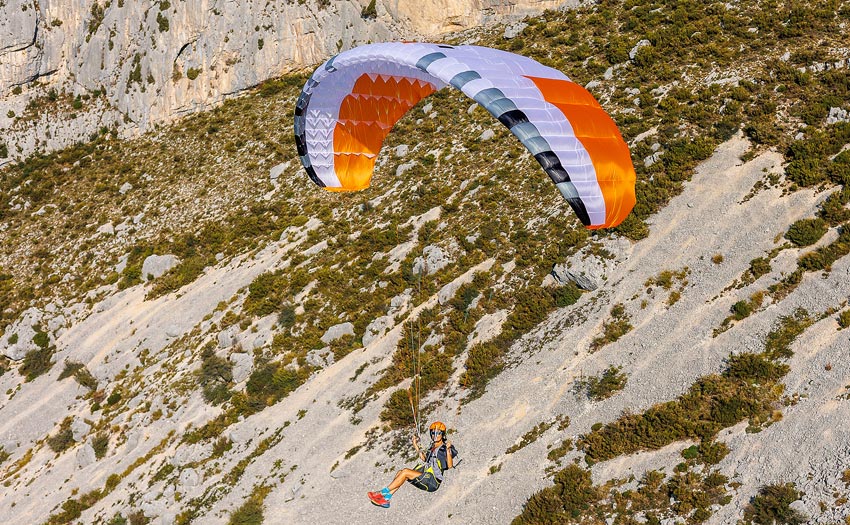
Updated materials
Dudek announced an update to the Run&Fly in September 2022, claiming improvements to the overall handling. They sent one to us to try and a few days later I opened our post-box to find a small cardboard box with Dudek tape, inside. Was this really a wing? Yes, and not only a glider in an inner bag, but there was also a tiny roll-out backpack big enough for the wing and a string harness.
With a little bit of daylight left, I grabbed the wing and headed to our take-off for a quick flight. Unrolling it on launch, things looked similar to the original. Indeed, the aspect ratio and cell count are the same, along with the structure. You will still find the same narrow self-inflating tube along the leading edge; behind this there are 41 ‘cells’ in the single-surface section but this is reduced to just 13 in the back half.

This is where Dudek have made some improvements over the original. They have worked on the tensioning of this area to smooth it out and improve the airflow across the top of the wing, which they say improves the glide. The most obvious change is the new modern colour scheme in place of the single colour of the original. We like it, especially the orange we were sent, which goes well with the autumn leaves.
Other changes are more subtle. The main cloth is now Porcher’s double-coated Skytex 27. This does weigh more than the Porcher Skytex 27 Classic the original was made from, and a tougher Skytex 32 is now used on the ribs (the ribs on the original were made from Porcher Skytex 27 hard finish).
The overall weight has risen by a few grams: only the size 14 now comes in under the magic 1kg. In the 16 we flew, the weight has gone up from 986g to 1040g, which is nothing when you think that material variations alone can add 50g to a wing. In our experience the double-coated material does look and feel better after a bit of use.
The rest of the changes have been made for ease of use rather than performance gains, but they are important for a wing that will be used when you are tired. The unsheathed lines are now coloured so they are easier to sort on launch – a big improvement over the original that had grass-coloured lines.
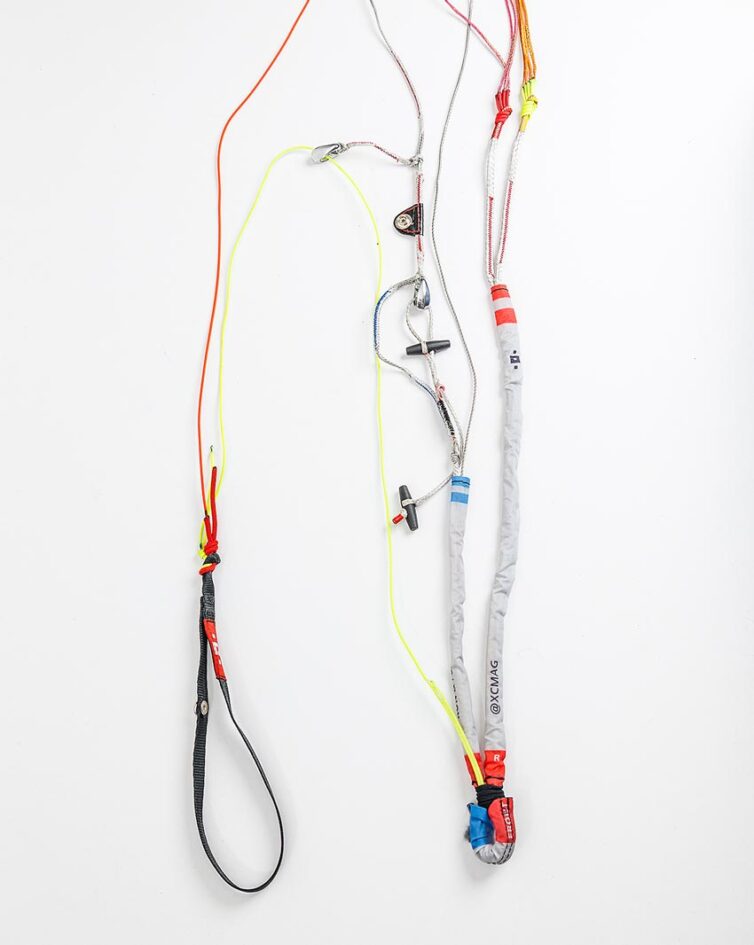
The risers have also been simplified; they are still bootlace Dyneema type connected with softlinks, but now the A and B risers and the C and D risers are kept together in two material covers, making it more like a two-riser set-up. This makes tangles less likely and the whole thing much easier to sort. For aspiring social media stars, Dudek can print your name or Instagram handle on the covers.

Our test wing came fitted with the optional trimmers that use a line spliced through a Dyneema cord to keep them in place. There are two small plastic handles to pull them on and off. They do add a little to the complexity and can be a little fiddly to use. These can be bought separately and added later.
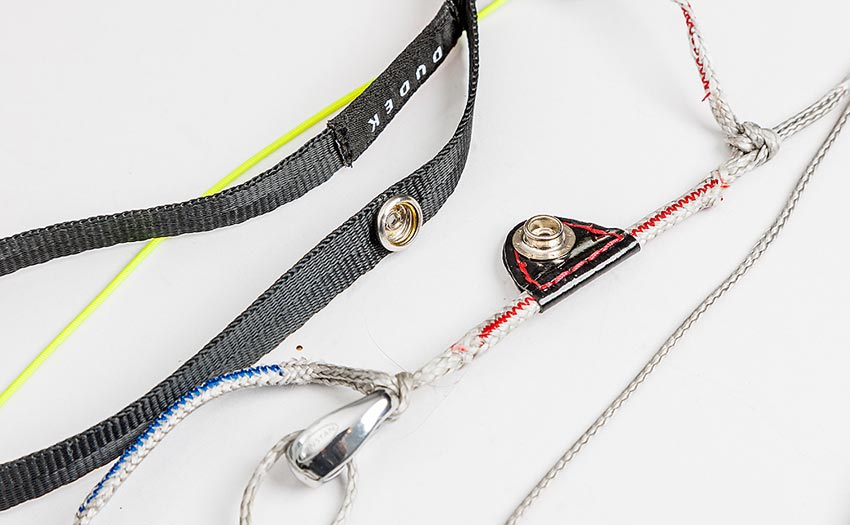
The brake handles are larger and made of tape, which is more comfortable to hold than the Dyneema loops the original had. They now attach with poppers, making them less likely to tangle. The brake lines go directly from the handle to the wing acro-style, but there is a line that goes from the handle via a pulley to the harness connection point to stop it flying away. This also means some of the brake pressure is applied on the whole of the D riser. Running your fingers along this line makes untangling the brakes easier.
At this point the new packing bag should be mentioned. It has a tapered design with a roll-top. You can easily get the wing and a lightweight harness inside, if you prefer not to detach. Then the whole lot can be compressed by rolling the top down and clipping it in place. Holes allow the air to escape as you compress it to a pack size of around four litres.
Launching
Reaching take-off it was obvious the wind was starting to turn katabatic. I quickly got ready for a forward launch. Having learnt it was better not to hold the As on the original, I used the same method of putting all the risers over my arm. As suggested in the manual, I had the trims at the slowest setting. I waited for a moment of stillness and accelerated forward.
The wing rose quickly above me and stopped at the zenith with very little input from me. It’s hard not to do anything! A few more steps and I was off into the air with no fuss.
I found this easy launch behaviour was the same for reverse launches too and I could rely on the wing’s abilities. When reverse-launching, you can add a bit of gentle pressure behind the As but you should avoid grabbing and pulling them. In any wind, leaning back will initiate the inflation. In stronger winds it can be harder to control the wing and I often chose to keep it balled up until ready to go. Once released it pops overhead quickly but is easy to control and doesn’t pull you off your feet. It’s great fun to play around with the wing on launch and it will flatter your groundhandling skills as it is easy to place where you want.

In the air
With my weight of around 85kg on the 16 I had good forward speed, averaging around 36km/h when flying legs at 180 degrees to each other. This is GPS speed, flying at between 1,500m and 800m ASL. The trimmers add around 4-5km/h going from full slow to full fast, and the middle position is equivalent to the original Run-&-Fly. On full fast I did notice quite a bit of vibration in the wing itself; Charlie King, flying it at a lower weight, didn’t experience this as much. The wing does move a bit more in the air than some other single-skin wings, but it stops the pitch by itself. It responds quickly to brake inputs with precise handling.
I was pleasantly surprised with the amount of lift generated in flight, and with a bit of wind I could happily soar our local cliffs. The precise handling makes working the lift easy and I was confident I could put it where I needed to. I even managed a few early-morning thermals. It bites in nicely and doesn’t get pushed back on entry. Once in you can use weightshift and brake to optimise the turns.
You can go harder with the brakes and get more banked up too. Wingovers build nicely and it is easy to get above the wing, but it stops as soon as you ease off, thanks to its autocorrection. A word of warning is that the brake pressure doesn’t ramp up massively as you get to the stall point. For this reason, I think you need to be relatively experienced to fly this, especially heavily loaded. Playing with the spin point, I noticed it would ‘snap’ through the stall point without giving much warning, Having said that, on release it would recover immediately with a short sharp dive.
Landing
The flare has always been the Achilles’ heel of single-surface wings, but Dudek have done a great job of giving the Run&Fly2 enough flare to make landings easy. You don’t have to use masses of brake to get a good flare – in fact you shouldn’t, because if you are too heavy-handed you will lose energy. We found it was always easy to make a soft landing even in nil-wind conditions.
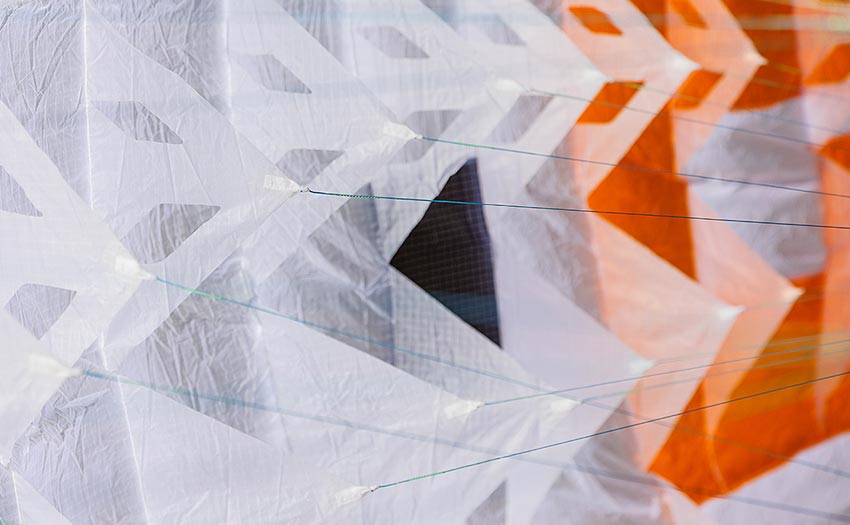
The verdict
The changes may be subtle but they give an overall improvement, especially when it comes to ease of use. Although it is slightly heavier than its predecessor, it retains its diminutive packing size, and with the new inner bag you can pack it more tightly.
Along with the new running-vest style bags that are now available, it makes running with it even more appealing. Alpinists, hikers or even backpackers can bring along a complete flying set-up in a small, compressed pack inside their main rucksack.
Other improvements make life easier on launch, and the optional trimmers add flexibility. All are worthwhile upgrades, and it looks that bit nicer. In smaller sizes it’s a great tool for mountain descents; go larger and you will have a minute wing that you can hide in your travel bags.
Manufacturer’s SPECIFICATIONS
Dudek say: “The new version of the lightest wing in the world!”
Use: hike-and-fly and alpinism
Pilot level: Experienced pilots
Sizes (Flat area m²): 14, 16, 18, 20
Certified take-off weight (kg): 45-105, 45-105, 50-105, 60-105
Glider weight (kg): 0.94, 1.04, 1.13, 1.20
Cells: 41
Flat aspect ratio: 4.8
Certification: Load tested (EN 926-1) to 111kg
Published in issue 237 (February / March 2023)
Marcus King flew the Dudek Run&Fly 16 at around 85kg using an AirDesign Slip harness and Skywalk Core harness. Charlie King flew the wing at a take-off weight of 60kg






